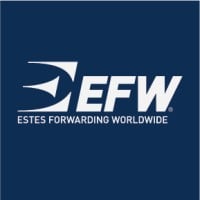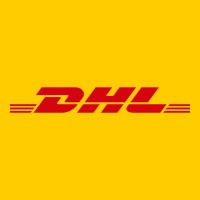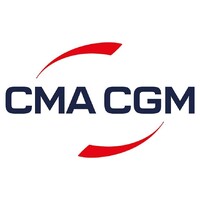
Estes Forwarding Worldwide Company Cyber Security Posture
efwnow.comEstes Forwarding Worldwide (EFW) is one of the leading domestic and international freight forwarders in the United States, providing customized logistics solutions for clients around the world and across all industries including retail, government, automotive, health services, technology, and exhibit services via air, ground, and ocean freight. A subsidiary of Estes Express Lines and located in Richmond, Virginia, EFW is uniquely backed by Estes Express Lines’ extensive linehaul network, providing EFW clients with a hybrid transportation network along with a personal client relationship approach ensuring the optimal logistics solution is identified and executed each and every time. EFW has offices strategically placed across the United States and over 1,000 employees nationwide. Offering a full suite of customs brokerage services, EFW maintains industry memberships and certifications, including CCR, ORCA registration, CRAF, C-TPAT certification, NVOCC, SmartWay, IAC, and IATA endorsed agent status. Industry awards include Specialty Carrier of the Year by Worldwide Express and Home Depot Inc., E-Commerce Delivery Carrier of the Year by Walmart in 2015, and recognition by Global Trade Americas as a leading 3PL to watch. EFW's “We Care” initiative supports the company’s ongoing commitment to service and its customers, employees, and carrier partners through teamwork, appreciation, commitment, and relationships, which the company considers to be its most leveraged asset.
EFW Company Details
estes-forwarding-worldwide
512 employees
7467.0
none
Transportation, Logistics, Supply Chain and Storage
efwnow.com
Scan still pending
EST_2002742
In-progress
Between 200 and 800
This score is AI-generated and less favored by cyber insurers, who prefer the TPRM score.
 EFW Global Score
EFW Global Score.png)

Estes Forwarding Worldwide Company Scoring based on AI Models
| Model Name | Date | Description | Current Score Difference | Score |
|---|---|---|---|---|
| AVERAGE-Industry | 03-12-2025 | This score represents the average cybersecurity rating of companies already scanned within the same industry. It provides a benchmark to compare an individual company's security posture against its industry peers. | N/A | Between 200 and 800 |
Estes Forwarding Worldwide Company Cyber Security News & History
| Entity | Type | Severity | Impact | Seen | Url ID | Details | View |
|---|---|---|---|---|---|---|---|
| Estes Forwarding Worldwide | Ransomware | 100 | 4 | 6/2025 | EST626062825 | Link | |
Rankiteo Explanation : Attack with significant impact with customers data leaksDescription: Estes Forwarding Worldwide experienced a ransomware attack on May 28, 2025, by the Qilin ransomware gang. The attack compromised documents including passport scans, driver’s licenses, and spreadsheets. Although the company assured there was no significant disruption to their business and they were fully operational within hours, the data breach involved sensitive information, potentially affecting customers and employees. The exact number of notified victims and whether a ransom was paid remain unknown. | |||||||
Estes Forwarding Worldwide Company Subsidiaries

Estes Forwarding Worldwide (EFW) is one of the leading domestic and international freight forwarders in the United States, providing customized logistics solutions for clients around the world and across all industries including retail, government, automotive, health services, technology, and exhibit services via air, ground, and ocean freight. A subsidiary of Estes Express Lines and located in Richmond, Virginia, EFW is uniquely backed by Estes Express Lines’ extensive linehaul network, providing EFW clients with a hybrid transportation network along with a personal client relationship approach ensuring the optimal logistics solution is identified and executed each and every time. EFW has offices strategically placed across the United States and over 1,000 employees nationwide. Offering a full suite of customs brokerage services, EFW maintains industry memberships and certifications, including CCR, ORCA registration, CRAF, C-TPAT certification, NVOCC, SmartWay, IAC, and IATA endorsed agent status. Industry awards include Specialty Carrier of the Year by Worldwide Express and Home Depot Inc., E-Commerce Delivery Carrier of the Year by Walmart in 2015, and recognition by Global Trade Americas as a leading 3PL to watch. EFW's “We Care” initiative supports the company’s ongoing commitment to service and its customers, employees, and carrier partners through teamwork, appreciation, commitment, and relationships, which the company considers to be its most leveraged asset.
Access Data Using Our API

Get company history
.png)
EFW Cyber Security News
Estes Forwarding Worldwide hit by cyberattack
Estes Forwarding Worldwide said it was targeted by a cyberattack in May, but reports “no significant disruption.”
Estes reports cyberattack caused ongoing tech outage
A cyberattack on a trucking fleet limits a company's visibility into its operations and can shut down its point of sale — preventing new ...
Cyberattack victim Estes making ‘steady progress’
An email from Estes to its customers says it's made progress climbing back from a cybersecurity attack.
A Cyberattack Forced a Logistics Company to Temporarily Halt Operations
The global logistics company shut down most of its operating and accounting systems to protect its data and infrastructure.

EFW Similar Companies

Delhivery
#WeGoTheExtraMile | We are India’s largest fully integrated logistics provider, simplifying commerce with cutting-edge technology, world-class infrastructure, and unmatched expertise to deliver seamless supply chain solutions for businesses of all sizes. Comprehensive Solutions for Every Need ➡️E

Aramex South Africa
Aramex is a provider of comprehensive logistics and transportation solutions. Established in 1982, as an express operator, Aramex rapidly transformed itself into a global brand recognized for its customized services and innovative multi-product offering. Our range of services includes international

Toll Group
At Toll, we do more than just logistics - we move the businesses that move the world. Our 16,000 team members can help solve any logistics, transport, or supply chain challenge – big or small. We have been supporting our customers for more than 130 years. Today, we support more than 20,000 customers

KTZ Express
KTZ Express JSC multimodal company is a sales center of cargo transportation and logistics services for “Kazakhstan Railways” JSC National Company. KTZ Express provides a full range of transport and logistics services in all types of transportation on all routes, integrates transportation by rail, s

DHL
DHL is the leading global brand in the logistics industry. Our divisions offer an unrivaled portfolio of logistics services ranging from national and international parcel delivery, e-commerce shipping and fulfillment solutions, international express, road, air and ocean transport to industrial suppl

CMA CGM
The CMA CGM Group is a global player in sea, land, air and logistics solutions. Present in 160 countries, it employs 160,000 people, of which nearly 6,000 in Marseille where its head office is located. The world's 3rd largest shipping company, CMA CGM serves more than 420 ports across 5 continents

Frequently Asked Questions (FAQ) on Cybersecurity Incidents
EFW CyberSecurity History Information
Total Incidents: According to Rankiteo, EFW has faced 1 incidents in the past.
Incident Types: The types of cybersecurity incidents that have occurred include ['Ransomware'].
Total Financial Loss: The total financial loss from these incidents is estimated to be {total_financial_loss}.
Cybersecurity Posture: The company's overall cybersecurity posture is described as Estes Forwarding Worldwide (EFW) is one of the leading domestic and international freight forwarders in the United States, providing customized logistics solutions for clients around the world and across all industries including retail, government, automotive, health services, technology, and exhibit services via air, ground, and ocean freight. A subsidiary of Estes Express Lines and located in Richmond, Virginia, EFW is uniquely backed by Estes Express Lines’ extensive linehaul network, providing EFW clients with a hybrid transportation network along with a personal client relationship approach ensuring the optimal logistics solution is identified and executed each and every time. EFW has offices strategically placed across the United States and over 1,000 employees nationwide. Offering a full suite of customs brokerage services, EFW maintains industry memberships and certifications, including CCR, ORCA registration, CRAF, C-TPAT certification, NVOCC, SmartWay, IAC, and IATA endorsed agent status. Industry awards include Specialty Carrier of the Year by Worldwide Express and Home Depot Inc., E-Commerce Delivery Carrier of the Year by Walmart in 2015, and recognition by Global Trade Americas as a leading 3PL to watch. EFW's “We Care” initiative supports the company’s ongoing commitment to service and its customers, employees, and carrier partners through teamwork, appreciation, commitment, and relationships, which the company considers to be its most leveraged asset..
Detection and Response: The company detects and responds to cybersecurity incidents through {description_of_detection_and_response_process}.
Incident Details
Incident 1: Ransomware Attack
Title: {Incident_Title}
Description: {Brief_description_of_the_incident}
Date Detected: {Detection_Date}
Date Publicly Disclosed: {Disclosure_Date}
Date Resolved: {Resolution_Date}
Type: {Type_of_Attack}
Attack Vector: {Attack_Vector}
Vulnerability Exploited: {Vulnerability}
Threat Actor: {Threat_Actor}
Motivation: {Motivation}
Incident 2: Data Breach
Title: {Incident_Title}
Description: {Brief_description_of_the_incident}
Date Detected: {Detection_Date}
Date Publicly Disclosed: {Disclosure_Date}
Date Resolved: {Resolution_Date}
Type: {Type_of_Attack}
Attack Vector: {Attack_Vector}
Vulnerability Exploited: {Vulnerability}
Threat Actor: {Threat_Actor}
Motivation: {Motivation}
Common Attack Types: As of now, the company has not encountered any reported incidents involving common cyberattacks.
Identification of Attack Vectors: The company identifies the attack vectors used in incidents through {description_of_identification_process}.
Impact of the Incidents
Incident 1: Ransomware Attack
Financial Loss: {Financial_Loss}
Data Compromised: {Data_Compromised}
Systems Affected: {Systems_Affected}
Downtime: {Downtime}
Operational Impact: {Operational_Impact}
Conversion Rate Impact: {Conversion_Rate_Impact}
Revenue Loss: {Revenue_Loss}
Customer Complaints: {Customer_Complaints}
Brand Reputation Impact: {Brand_Reputation_Impact}
Legal Liabilities: {Legal_Liabilities}
Identity Theft Risk: {Identity_Theft_Risk}
Payment Information Risk: {Payment_Information_Risk}
Incident 2: Data Breach
Financial Loss: {Financial_Loss}
Data Compromised: {Data_Compromised}
Systems Affected: {Systems_Affected}
Downtime: {Downtime}
Operational Impact: {Operational_Impact}
Conversion Rate Impact: {Conversion_Rate_Impact}
Revenue Loss: {Revenue_Loss}
Customer Complaints: {Customer_Complaints}
Brand Reputation Impact: {Brand_Reputation_Impact}
Legal Liabilities: {Legal_Liabilities}
Identity Theft Risk: {Identity_Theft_Risk}
Payment Information Risk: {Payment_Information_Risk}
Average Financial Loss: The average financial loss per incident is {average_financial_loss}.
Commonly Compromised Data Types: The types of data most commonly compromised in incidents are {list_of_commonly_compromised_data_types}.
Incident 1: Ransomware Attack
Entity Name: {Entity_Name}
Entity Type: {Entity_Type}
Industry: {Industry}
Location: {Location}
Size: {Size}
Customers Affected: {Customers_Affected}
Incident 2: Data Breach
Entity Name: {Entity_Name}
Entity Type: {Entity_Type}
Industry: {Industry}
Location: {Location}
Size: {Size}
Customers Affected: {Customers_Affected}
Response to the Incidents
Incident 1: Ransomware Attack
Incident Response Plan Activated: {Yes/No}
Third Party Assistance: {Yes/No}
Law Enforcement Notified: {Yes/No}
Containment Measures: {Containment_Measures}
Remediation Measures: {Remediation_Measures}
Recovery Measures: {Recovery_Measures}
Communication Strategy: {Communication_Strategy}
Adaptive Behavioral WAF: {Adaptive_Behavioral_WAF}
On-Demand Scrubbing Services: {On_Demand_Scrubbing_Services}
Network Segmentation: {Network_Segmentation}
Enhanced Monitoring: {Enhanced_Monitoring}
Incident 2: Data Breach
Incident Response Plan Activated: {Yes/No}
Third Party Assistance: {Yes/No}
Law Enforcement Notified: {Yes/No}
Containment Measures: {Containment_Measures}
Remediation Measures: {Remediation_Measures}
Recovery Measures: {Recovery_Measures}
Communication Strategy: {Communication_Strategy}
Adaptive Behavioral WAF: {Adaptive_Behavioral_WAF}
On-Demand Scrubbing Services: {On_Demand_Scrubbing_Services}
Network Segmentation: {Network_Segmentation}
Enhanced Monitoring: {Enhanced_Monitoring}
Incident Response Plan: The company's incident response plan is described as {description_of_incident_response_plan}.
Third-Party Assistance: The company involves third-party assistance in incident response through {description_of_third_party_involvement}.
Data Breach Information
Incident 2: Data Breach
Type of Data Compromised: {Type_of_Data}
Number of Records Exposed: {Number_of_Records}
Sensitivity of Data: {Sensitivity_of_Data}
Data Exfiltration: {Yes/No}
Data Encryption: {Yes/No}
File Types Exposed: {File_Types}
Personally Identifiable Information: {Yes/No}
Prevention of Data Exfiltration: The company takes the following measures to prevent data exfiltration: {description_of_prevention_measures}.
Handling of PII Incidents: The company handles incidents involving personally identifiable information (PII) through {description_of_handling_process}.
Ransomware Information
Incident 1: Ransomware Attack
Ransom Demanded: {Ransom_Amount}
Ransom Paid: {Ransom_Paid}
Ransomware Strain: {Ransomware_Strain}
Data Encryption: {Yes/No}
Data Exfiltration: {Yes/No}
Ransom Payment Policy: The company's policy on paying ransoms in ransomware incidents is described as {description_of_ransom_payment_policy}.
Data Recovery from Ransomware: The company recovers data encrypted by ransomware through {description_of_data_recovery_process}.
Regulatory Compliance
Incident 1: Ransomware Attack
Regulations Violated: {Regulations_Violated}
Fines Imposed: {Fines_Imposed}
Legal Actions: {Legal_Actions}
Regulatory Notifications: {Regulatory_Notifications}
Incident 2: Data Breach
Regulations Violated: {Regulations_Violated}
Fines Imposed: {Fines_Imposed}
Legal Actions: {Legal_Actions}
Regulatory Notifications: {Regulatory_Notifications}
Regulatory Frameworks: The company complies with the following regulatory frameworks regarding cybersecurity: {list_of_regulatory_frameworks}.
Ensuring Regulatory Compliance: The company ensures compliance with regulatory requirements through {description_of_compliance_measures}.
Lessons Learned and Recommendations
Incident 1: Ransomware Attack
Lessons Learned: {Lessons_Learned}
Incident 2: Data Breach
Lessons Learned: {Lessons_Learned}
Incident 1: Ransomware Attack
Recommendations: {Recommendations}
Incident 2: Data Breach
Recommendations: {Recommendations}
Key Lessons Learned: The key lessons learned from past incidents are {list_of_key_lessons_learned}.
Implemented Recommendations: The company has implemented the following recommendations to improve cybersecurity: {list_of_implemented_recommendations}.
References
Additional Resources: Stakeholders can find additional resources on cybersecurity best practices at {list_of_additional_resources}.
Investigation Status
Incident 1: Ransomware Attack
Investigation Status: {Investigation_Status}
Incident 2: Data Breach
Investigation Status: {Investigation_Status}
Communication of Investigation Status: The company communicates the status of incident investigations to stakeholders through {description_of_communication_process}.
Stakeholder and Customer Advisories
Incident 1: Ransomware Attack
Stakeholder Advisories: {Stakeholder_Advisories}
Customer Advisories: {Customer_Advisories}
Incident 2: Data Breach
Stakeholder Advisories: {Stakeholder_Advisories}
Customer Advisories: {Customer_Advisories}
Advisories Provided: The company provides the following advisories to stakeholders and customers following an incident: {description_of_advisories_provided}.
Initial Access Broker
Incident 1: Ransomware Attack
Entry Point: {Entry_Point}
Reconnaissance Period: {Reconnaissance_Period}
Backdoors Established: {Backdoors_Established}
High Value Targets: {High_Value_Targets}
Data Sold on Dark Web: {Yes/No}
Incident 2: Data Breach
Entry Point: {Entry_Point}
Reconnaissance Period: {Reconnaissance_Period}
Backdoors Established: {Backdoors_Established}
High Value Targets: {High_Value_Targets}
Data Sold on Dark Web: {Yes/No}
Monitoring and Mitigation of Initial Access Brokers: The company monitors and mitigates the activities of initial access brokers through {description_of_monitoring_and_mitigation_measures}.
Post-Incident Analysis
Incident 1: Ransomware Attack
Root Causes: {Root_Causes}
Corrective Actions: {Corrective_Actions}
Incident 2: Data Breach
Root Causes: {Root_Causes}
Corrective Actions: {Corrective_Actions}
Post-Incident Analysis Process: The company's process for conducting post-incident analysis is described as {description_of_post_incident_analysis_process}.
Corrective Actions Taken: The company has taken the following corrective actions based on post-incident analysis: {list_of_corrective_actions_taken}.
Additional Questions
General Information
Ransom Payment History: The company has {paid/not_paid} ransoms in the past.
Last Ransom Demanded: The amount of the last ransom demanded was {last_ransom_amount}.
Last Attacking Group: The attacking group in the last incident was {last_attacking_group}.
Incident Details
Most Recent Incident Detected: The most recent incident detected was on {most_recent_incident_detected_date}.
Most Recent Incident Publicly Disclosed: The most recent incident publicly disclosed was on {most_recent_incident_publicly_disclosed_date}.
Most Recent Incident Resolved: The most recent incident resolved was on {most_recent_incident_resolved_date}.
Impact of the Incidents
Highest Financial Loss: The highest financial loss from an incident was {highest_financial_loss}.
Most Significant Data Compromised: The most significant data compromised in an incident was {most_significant_data_compromised}.
Most Significant System Affected: The most significant system affected in an incident was {most_significant_system_affected}.
Response to the Incidents
Third-Party Assistance in Most Recent Incident: The third-party assistance involved in the most recent incident was {third_party_assistance_in_most_recent_incident}.
Containment Measures in Most Recent Incident: The containment measures taken in the most recent incident were {containment_measures_in_most_recent_incident}.
Data Breach Information
Most Sensitive Data Compromised: The most sensitive data compromised in a breach was {most_sensitive_data_compromised}.
Number of Records Exposed: The number of records exposed in the most significant breach was {number_of_records_exposed}.
Ransomware Information
Highest Ransom Demanded: The highest ransom demanded in a ransomware incident was {highest_ransom_demanded}.
Highest Ransom Paid: The highest ransom paid in a ransomware incident was {highest_ransom_paid}.
Regulatory Compliance
Highest Fine Imposed: The highest fine imposed for a regulatory violation was {highest_fine_imposed}.
Most Significant Legal Action: The most significant legal action taken for a regulatory violation was {most_significant_legal_action}.
Lessons Learned and Recommendations
Most Significant Lesson Learned: The most significant lesson learned from past incidents was {most_significant_lesson_learned}.
Most Significant Recommendation Implemented: The most significant recommendation implemented to improve cybersecurity was {most_significant_recommendation_implemented}.
References
Most Recent Source: The most recent source of information about an incident is {most_recent_source}.
Most Recent URL for Additional Resources: The most recent URL for additional resources on cybersecurity best practices is {most_recent_url}.
Investigation Status
Current Status of Most Recent Investigation: The current status of the most recent investigation is {current_status_of_most_recent_investigation}.
Stakeholder and Customer Advisories
Most Recent Stakeholder Advisory: The most recent stakeholder advisory issued was {most_recent_stakeholder_advisory}.
Most Recent Customer Advisory: The most recent customer advisory issued was {most_recent_customer_advisory}.
Initial Access Broker
Most Recent Entry Point: The most recent entry point used by an initial access broker was {most_recent_entry_point}.
Most Recent Reconnaissance Period: The most recent reconnaissance period for an incident was {most_recent_reconnaissance_period}.
Post-Incident Analysis
Most Significant Root Cause: The most significant root cause identified in post-incident analysis was {most_significant_root_cause}.
Most Significant Corrective Action: The most significant corrective action taken based on post-incident analysis was {most_significant_corrective_action}.
What Do We Measure?
















Every week, Rankiteo analyzes billions of signals to give organizations a sharper, faster view of emerging risks. With deeper, more actionable intelligence at their fingertips, security teams can outpace threat actors, respond instantly to Zero-Day attacks, and dramatically shrink their risk exposure window.
These are some of the factors we use to calculate the overall score:
Identify exposed access points, detect misconfigured SSL certificates, and uncover vulnerabilities across the network infrastructure.
Gain visibility into the software components used within an organization to detect vulnerabilities, manage risk, and ensure supply chain security.
Monitor and manage all IT assets and their configurations to ensure accurate, real-time visibility across the company's technology environment.
Leverage real-time insights on active threats, malware campaigns, and emerging vulnerabilities to proactively defend against evolving cyberattacks.




